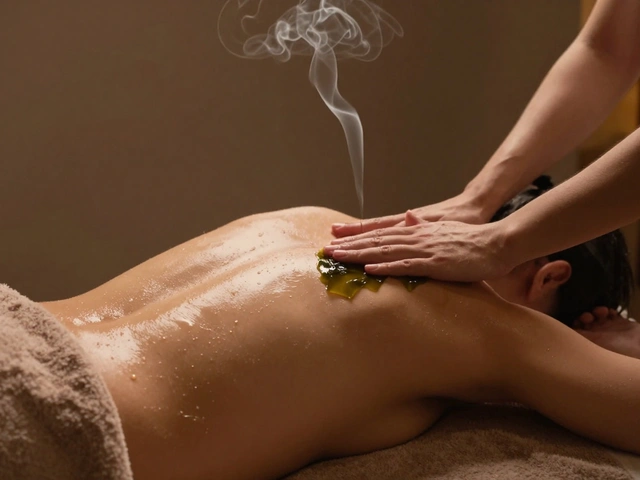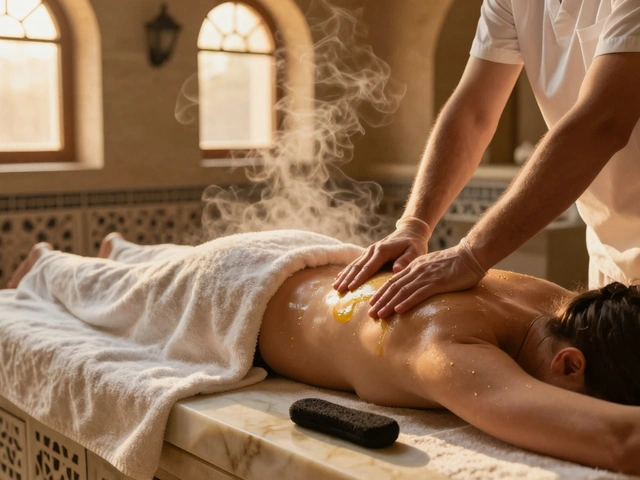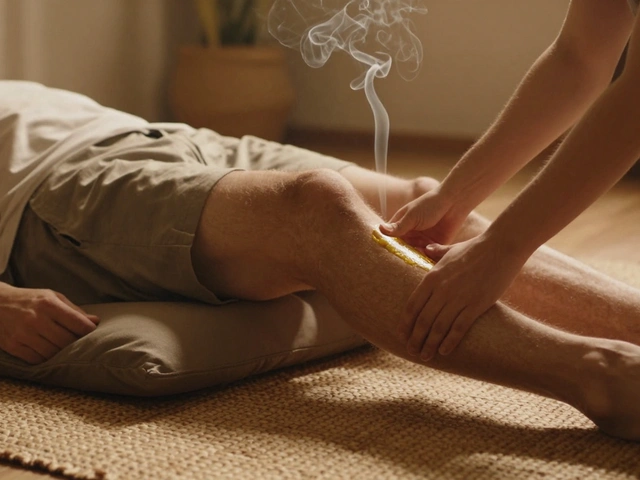Ever watched your kid bounce off the walls after a long day and wished for an instant “relax” button? Thai massage for kids might just be the secret weapon you didn’t know you needed. Today, parents everywhere are looking for ways to help their children wind down, focus better, and sleep soundly—without relying on screen time or endless bedtime battles.
Think of Thai massage as a gentle, guided stretch session that also feels like play. It’s not your classic spa scene with lots of oils and hushed tones. Instead, therapists work with kids right on a soft floor mat, helping them move, wiggle, and relax through playful, age-appropriate techniques. This isn’t just about feeling good in the moment—many parents notice their kids become more flexible, less anxious, and even more focused at school after a few sessions.
But safety comes first—always. You want to know who’s touching your child, what’s normal during a session, and how to pick a therapist that truly understands kids’ bodies and minds. Getting all your questions answered up front is easier than you think. No guesswork—just straightforward info to help you make the best decision for your family.
- Key Benefits of Thai Massage for Kids
- Types of Thai Massage for Children
- What to Expect and How to Prepare
- Safety Tips for Parents
Key Benefits of Thai Massage for Kids
Kids pick up bumps and stress just like adults, but their bodies are constantly growing and changing. That’s where thai massage for kids fits in. The techniques are specially tuned for little bodies—think gentle stretches and playful movements instead of deep pressure. Here’s what real parents and therapists see as the big wins:
- Improved Flexibility: Thai massage gently helps kids move their arms, legs, and back through their natural range. This kind of stretching supports muscle growth and can prevent stiffness, especially if your child loves sports or spends lots of time hunched over screens.
- Better Sleep: Lots of parents say their children fall asleep faster and stay asleep longer after a session. The relaxing moves encourage the release of the body’s natural calming hormones—perfect for winding down at night.
- Reduced Anxiety and Hyperactivity: Physical touch—especially when it’s safe and calming—can lower stress hormones in kids. Kids who fidget, worry, or get overwhelmed often feel more chill and focused after a massage.
- Enhanced Body Awareness: Kids become more tuned in to how their bodies feel, which helps with balance and coordination. This is a big bonus for active kids and those who struggle with motor skills.
- Relief from Common Aches: Kids get sore necks, growing pains, and the occasional muscle knot. Thai massage can ease these discomforts using specific stretches and pressure points that are safe for children.
If you’re wondering if there’s real proof, some clinics in Asia tracked outcomes and found about 7 out of 10 kids reported less discomfort and slept better after regular sessions.
| Benefit | How Kids Respond |
|---|---|
| More Flexibility | Looser, more confident movement |
| Sleep Quality | Quicker bedtime, deeper sleep |
| Anxiety Reduction | Less fidgeting, calmer mood |
| Pain Relief | Fewer complaints of aches |
The bottom line? Starting with a trained therapist who knows kids can turn Thai massage from a luxury into a real boost for your child's wellness—physically and emotionally.
Types of Thai Massage for Children
Kid-friendly Thai massage is a whole different ballgame from the tough stretches or deep pressure that adults get. Therapists use gentle, playful movements and never go beyond what’s comfortable for your child. Let’s look at the main ways thai massage for kids is offered:
- Traditional Thai Stretching: This involves easy, guided stretches that help kids move their arms, legs, and back. It can improve flexibility and ease growing pains without any discomfort.
- Thai Foot Massage for Kids: Children love this! It uses gentle pressure and small circular motions on the feet and lower legs. Some studies from pediatric clinics in Bangkok found it helps calm hyper kids before bedtime.
- Head, Neck, and Shoulder Focus: Therapists use soft touch and slow rocking to soothe headaches from screens or school pressure. A parent recently told me her son’s frequent tension headaches dropped by half with a few sessions.
- Tummy Massage (Abdominal): For kids who get tummy aches or minor digestion problems, therapists gently massage in small circles. It’s not magic, but several parents swear it helped with their child’s constipation.
Worried about kids getting bored? Sessions usually feel like a playful workout—some therapists add animal poses or turn stretches into games, so even fidgety kids stay engaged.
Here’s a quick comparison to help you spot what’s different for children versus adults:
| Feature | Kids’ Thai Massage | Adult Thai Massage |
|---|---|---|
| Pressure Level | Very gentle | Medium to firm |
| Session Length | 20–40 minutes | 60–90 minutes |
| Techniques | Soft stretches, games, story play | Deep stretches, full-body rhythms |
| Focus Areas | Flexibility, calming, fun | Muscle relief, stress reduction |
No oils or balms are used unless you ask for it and your child’s skin is allergy-free. Therapists always check in with you and your child before starting. That way, Thai massage for children is never one-size-fits-all but always tailored to what your kid needs right now.

What to Expect and How to Prepare
Bringing your child to their first thai massage for kids session shouldn’t feel intimidating. Here’s exactly what goes down, so you’re not left guessing or worrying about surprises.
The massage usually happens on a comfy mat on the floor, not a high table. Kids keep their clothes on—think comfy gym shorts and a t-shirt. There’s no oil, and everything is very gentle. Sessions last about 30-45 minutes for younger kids, and sometimes up to an hour for older children. Most places let you stay in the room, especially for little ones, so your child always feels safe and secure.
The therapist guides your child through slow stretches, lightly presses along their arms, legs, and back, and uses playful moves to keep them engaged. If you’re picturing someone twisting your child into a pretzel, relax—it’s nothing dramatic, and everything is tailored to their age and flexibility. Communication is key, so the therapist will often check in, asking your kid if they’re comfortable or want to skip a stretch.
Wondering how to get ready for a session? Here’s a quick checklist:
- Dress your child in loose, stretchy clothes.
- Avoid big meals right before—you don’t want a full tummy during stretches.
- Let your child know what to expect—explain that it’ll be fun, gentle, and there’s nothing to worry about.
- Bring your own water bottle and maybe a favorite small toy for comfort.
- Arrive a few minutes early so your child can meet the therapist and get comfortable with the space.
Most therapists are well trained in child massage benefits and have experience making sessions fun and low-pressure. If your child has any medical conditions or injuries, always tell the therapist ahead of time. They’ll adapt the routine as needed. It’s normal for your child to be a bit giggly or wiggly at first—let them enjoy it!
| Activity | Approx. Time (minutes) |
|---|---|
| Warm-up and getting comfortable | 5 |
| Gentle stretching and movement | 20-30 |
| Light pressure massage | 10-20 |
| Cool down and feedback | 5 |
If your child just isn’t into it, don’t force the experience. Thai massage for kids is about helping them relax, not making anyone nervous or uncomfortable. The first session is usually a learning experience for both you and your child. Most kids start looking forward to their next visit—especially once they realize massage time means special attention and relaxation, not another chore on their list.
Safety Tips for Parents
If you’re thinking about trying thai massage for kids, safety has to be your top priority. Kids' bodies aren’t just smaller—they’re still growing, so what works for adults might not be right for children. Here’s what you actually need to know to keep things safe and comfy.
- Pick a Licensed Therapist: Not everyone offering kids massage safety is actually trained for it. Always check for proper child massage certification, not just a general Thai massage license. If the therapist has experience working with children, even better.
- Always Stay in the Room: Be present during your child’s session, especially if it’s their first or second time. This helps your child feel secure, and you’ll see exactly what’s going on. A good therapist welcomes your involvement.
- Talk About Boundaries: Before the session, ask the therapist to explain what will happen in language your child understands. Let your kid know it’s totally OK to say "stop" or "no" at any point if something feels weird or hurts.
- Give a Health Update: Kids with certain health issues (allergies, injuries, bone conditions) may need special care or even a doctor’s green light. Always share this info before the massage starts.
- Keep Things Light and Playful: Sessions should feel like gentle stretching or structured play, not deep-tissue work. Kids shouldn’t be pushed into tough poses or feel pain at any time.
- Watch for Reactions: After the session, keep an eye out for soreness, bruising, or changes in mood. If anything seems off, ask the therapist right away or talk to your pediatrician.
Want to know what most parents ask before booking child massage benefits? Check out this real-world rundown of do’s and don’ts:
| Do | Don’t |
|---|---|
| Stay with your child during sessions | Leave your child unattended |
| Request to meet the therapist first | Book without checking credentials |
| Ask for age-appropriate techniques | Allow deep or painful pressure |
Remember, thai massage for kids should be safe, gentle, and honestly—fun. When parents, kids, and therapists are all on the same page, everybody wins. If you ever feel unsure about anything, trust your gut and ask questions. That’s the best way to make sure your child comes away smiling (and maybe a little sleepy, too).





